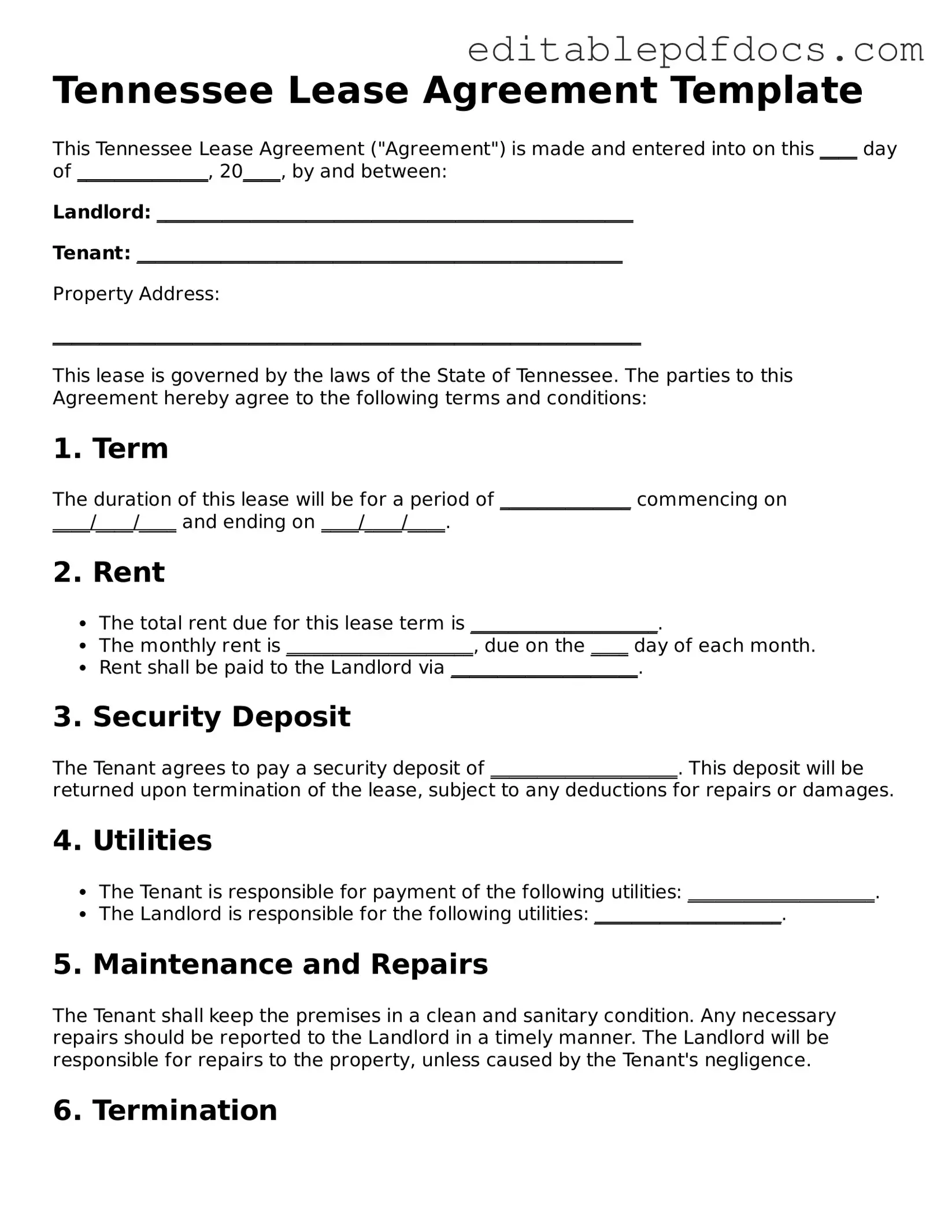When filling out the Tennessee Lease Agreement form, many people unknowingly make mistakes that can lead to confusion or legal issues later on. One common error is failing to include the full names of all tenants. It’s essential to list every person who will be living in the rental unit. Omitting a tenant can create problems if disputes arise or if someone needs to be held accountable for damages.
Another mistake often made is not specifying the lease term clearly. The lease should state whether it is a month-to-month agreement or a fixed-term lease, such as one year. Without this information, both landlords and tenants may have different expectations about how long the agreement lasts.
People also frequently overlook the importance of detailing the rent amount and due date. It is crucial to specify how much rent is due each month and when it must be paid. This clarity helps avoid misunderstandings regarding payment schedules and late fees.
Additionally, many individuals neglect to outline the security deposit terms. The lease should clearly state the amount of the deposit, the conditions under which it may be withheld, and the timeline for its return after the lease ends. This protects both parties and ensures everyone understands their rights and responsibilities.
Some tenants mistakenly believe they can skip including maintenance responsibilities in the lease. It is vital to clarify who is responsible for repairs and maintenance. This helps prevent disputes over who should handle issues like plumbing problems or broken appliances.
Another common oversight is not addressing the rules regarding pets. If the landlord has specific pet policies, such as breed restrictions or pet deposits, these should be clearly outlined in the lease. This avoids potential conflicts later on.
People sometimes forget to include provisions for terminating the lease. It is essential to specify how either party can end the agreement, including notice periods and acceptable reasons for termination. This ensures that both parties understand their options if circumstances change.
In addition, many individuals fail to read the fine print. Each section of the lease should be reviewed carefully to ensure all terms are understood. Ignoring this step can lead to agreeing to unfavorable conditions.
Another mistake is not including the landlord’s contact information. It’s important to have a clear way to communicate with the landlord for any questions or issues that may arise during the lease period. This contact information should be easily accessible within the agreement.
Lastly, some people do not keep a copy of the signed lease. Once the lease is completed, both parties should retain a signed copy for their records. This serves as a reference point in case any disputes or questions come up in the future.
